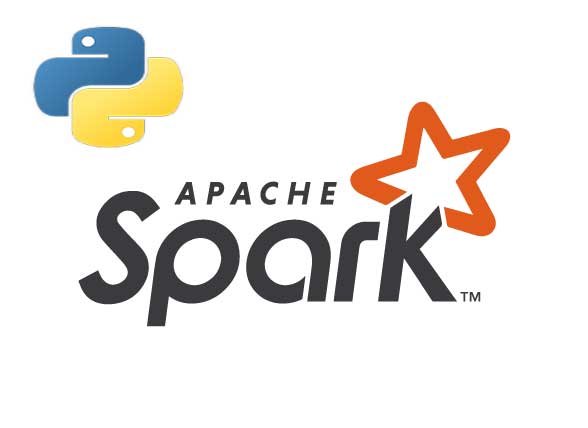Image source Guest Post by Gilad David Maayan Amazon Web Services is the leading cloud provider, offering a range of storage options to meet the complex and evolving needs of an organization. Along with the standard cloud storage option, S3, Amazon also offers EBS, which provides flexible storage for the data contained in applications. With Amazon’s high availability, customizability and variety of integrated cloud services, you can pursue a storage tiering strategy for your data, taking advantage of a key facet of Amazon—EBS snapshots. Read on to learn how snapshots can make your life on the cloud easier. What Is Amazon EBS? Amazon Elastic Block Store (EBS) is a cloud-based…
-
-
Create a simple image search engine in OpenCV and Flask
I recently started playing with OpenCV, an open-source Computer Vision library for image processing. Luckily there are Python bindings available. More luck that the guys like Adrian has done a great service by releasing both book and blog on a similar topic. I have also made a demo which can see below. Conclusion So this was a basic image processing tutorial in OpenCV. It is not a mature product as it can’t tell you about unique colors in a picture. It is just telling you informaiton based on pixel colors rather than performing color segmentation and clustering based on a ML algorithm. So what is it all about? Well, it…
-
Getting Started with AWS Automation: EBS Snapshots, AWS Lambda and AWS Systems Manager
Image source: Pixabay Guest Post by Gilad David Maayan Whether you’ve recently adopted cloud-based services or you’ve been using them for a while, you’re likely interested in reducing the amount of manual work that managing a cloud system requires. Luckily, AWS includes a variety of automation tools and integration options that you can put to use to accomplish just that. We’ll look at three of your options here, one simple to implement and two a bit more challenging, to give you a better idea of how they work and how you can use them to maximum benefit. EBS Snapshots The Automation of EBS snapshots is one of the easiest places…
-
Data Visualization in Bokeh – Line Graph
Almost one and half year back I create a data visualization series with Matplotlib which was appreciated by hundreds of developers. Today I am going to start another data visualization series to create interactive graphs and charts in Bokeh. What is Bokeh From the official website: Bokeh is an interactive visualization library that targets modern web browsers for presentation. Its goal is to provide elegant, concise construction of versatile graphics, and to extend this capability with high-performance interactivity over very large or streaming datasets. Bokeh can help anyone who would like to quickly and easily create interactive plots, dashboards, and data applications. In short, Bokeh allows Python developers to create…
-
Create your first web scraper with Scraper API and Python
Recently I come across a tool that takes care of many of the issues you usually face while scraping websites. The tool is called Scraper API which provides an easy to use REST API to scrape a different kind of websites(Simple, JS enabled, Captcha, etc) with quite an ease. Before I proceed further, allow me to introduce Scraper API. What is Scraper API If you visit their website you’d find their mission statement: Scraper API handles proxies, browsers, and CAPTCHAs, so you can get the HTML from any web page with a simple API call! As it suggests, it is offering you all the things to deal with the issues…
-
Create your first ETL Pipeline in Apache Spark and Python
In this post, I am going to discuss Apache Spark and how you can create simple but robust ETL pipelines in it. You will learn how Spark provides APIs to transform different data format into Data frames and SQL for analysis purpose and how one data source could be transformed into another without any hassle. What is Apache Spark? According to Wikipedia: Apache Spark is an open-source distributed general-purpose cluster-computing framework. Spark provides an interface for programming entire clusters with implicit data parallelism and fault tolerance. From Official Website: Apache Spark™ is a unified analytics engine for large-scale data processing. In short, Apache Spark is a framework which is…
-
Codelobster IDE – Free PHP, HTML, CSS, JavaScript editor
Guest Post by Stas Ustimenko In this article, we suggest you to get acquainted with the free editor of web languages – Codelobster IDE. It is presented on the software market for a long time already, and it wins a lot of fans. Codelobster IDE allows you to edit PHP, HTML, CSS and JavaScript files, it highlights the syntax and gives hints for tags, functions and their parameters. This editor easily deals with those files that contain a mixed content. If you insert PHP code in your HTML template, then the editor correctly highlights both HTML tags and PHP functions. The same applies to CSS and JavaScript code, which is…
-
Getting started with Apache Cassandra and Python
In this post, I am going to talk about Apache Cassandra, its purpose, usage, configuration, and setting up a cluster and in the end, how can you access it in your Python applications. At the end of the post, you should have an idea of it and could start playing it for your next project. What is Apache Cassandra? According to Wikipedia: Apache Cassandra is a free and open-source, distributed, wide column store, NoSQL database management system designed to handle large amounts of data across many commodity servers, providing high availability with no single point of failure. Cassandra offers robust support for clusters spanning multiple datacenters,[1] with asynchronous masterless replication…
-
How to implement Stellar blockchain on existing ecommerce site
In the last couple of posts, I had discussed the technical site of implementing Stellar blockchain in Python. Those posts stirred interest among many and I got emails about the implementation of it on existing web applications, especially e-commerce websites. Since the actual purpose got buried in lathe st two posts between the lines of code. So today, I am making an attempt to explain in a language that business people, the site owners or managers could understand. Keep reading! I will be discussing a fictitious website that sells tea online, say allthingstea.com. They have a variety of tea products which are loved by thousands of customers. They have different…
-
Create your first ReactJS app
In this tutorial, you are going to learn What is ReactJS and how you can use this JS framework to write maintainable web apps in Javascript. The project we are going to build will be a clone of Coinmarketcap, a famous website that lists the latest price of Cryptocurrencies. CMC provides JSON APIs to access their data. Before I get into the main project, let’s talk a bit about ReactJS itself. What is ReactJS? From the official website: A JavaScript library for building user interfaces. ReactJS was initially developed by Facebook and now maintained by the community. ReactJS is: Declarative:- By declarative, it means that you don’t tell all the…




